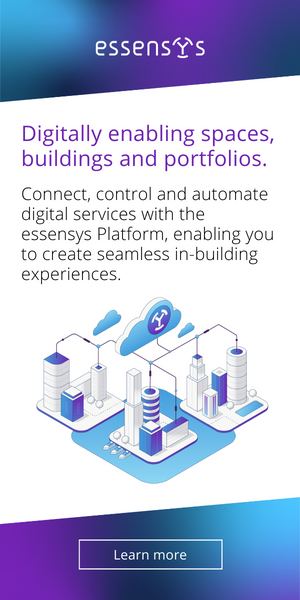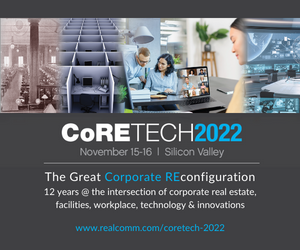Making Workplaces ‘Magnetic’ Again: The Role of Technology, Data and Customer Experience
Vaibhav Gujral, Partner, McKinsey & Company

Two-plus years after companies had to turn to remote work in a rush, a hybrid work environment has become the new norm. With it, this shift in how we work has also become the subject of significant discussion from CEO roundtables to dinner tables.
Even so, there has been a lack of solid evidence to inform the debate or decision-making around how the real estate industry and companies should respond and capitalize on the opportunity that this new way of working might represent. In McKinsey’s most recent American Opportunity Survey, we asked more than 25,000 US workers about their experience with remote work. A second survey asked 12,000 people - from all regions and occupations, beyond the typical office worker - about how much flexibility matters for people reentering the workforce.
Here are some highlights of this research and why it matters to both companies and owners and operators of real estate.
58 percent of US workers - or about 92 million people - can work remotely at least part time. Of those who can, 87 percent do, a third of them fulltime. This has serious implications for how people move throughout buildings each day, how much space is needed, and what the space looks and feels like to make the experience of coming into the office “worth the commute.”
Men are more likely (61 percent) to be able to work remotely than women (52 percent), and so are higher-income workers, which has implications for how buildings should be programmed to create a more inclusive and equitable experience.
And then there’s the great resignation, where the ability to work flexibly is a major reason Americans will switch jobs. In fact, 40 percent of Americans are at least somewhat likely to look for a new job in the next six months. This statistic remains unchanged from a year ago, which emphasizes the first implication of how our buildings are perceived and occupied.
To bring magnetism and magic to the workplace, deploying a tenant experience application is no longer sufficient. Owners and operators of real estate must explore innovative, customer-centric solutions and embark on a true digital transformation of their organization that is shaped by three new realities: people work differently, space is used differently, and outcomes should be measured differently.
People are working differently
All workers must now integrate digitally with those connecting virtually and in the room. Employers who enabled and upskilled their teams in digital capabilities are better positioned to productively collaborate and create value from anywhere and anytime.
In addition to tenants making these changes for their employees, leasing and property management must also become more digital. Real estate companies – both owners and operators – must adapt to and embrace these new models of operations if they are to improve the tenant experience, gain cost advantages, and strengthen the efficiency and experience of their own workforce.
Finally, articulating the ‘how’ and ‘why’ specific kinds of work can be done is another way to communicate the purpose of a place. After a rigorous bottom-up analysis, one pharmaceutical company decided not to reduce its headquarters footprint, but instead to invest in it. The theme was “follow the molecule,” so that how and why teams work in certain spaces – across discovery, research, development, scaling up, and manufacturing – resulted in a purposeful flow from one place to the next. For example, advanced video conferencing and augmented reality technologies enable labs across sites to innovate seamlessly.
Space is being used differently
Those who can work remotely still spend two days in the office on average. So place still matters - just differently than in 2019. As a result, every building, and the space within, needs a clearly defined purpose. As the CEO of a cloud-based data platform company put it, offices are “not a place to hang out 9 to 5.”
The workplace should be a source of competitive advantage – in similar fashion to how an organization will differentiate with their mission, vision, and purpose. Then technology and programming can be deployed to meet those goals.
To unlock an organization’s potential, we must understand the historical utilization of various spaces, determine how much space is needed in the future, and monitor how new configurations performance and are experienced. When done successfully, companies can test new ideas along the way with highly adaptable design and community activations. This is one reason that coworking and other hospitality-oriented workplaces have seen their average, post-pandemic occupancy levels rise higher than traditional offices.
Outcomes should be measured differently
Now that the performance of the office is being held to a higher standard by employees and their employers, the real estate industry must consider new ways of evaluating how successful a workplace really is.
One of the major shifts in the past two years is the mounting value of real estate portfolio flexibility. As employers increasingly rely on shared, in-building amenities (e.g., coworking space, meeting centers) and an evolving network of workplace-as-a-service providers, the boundaries of corporate workplaces become more elastic and dynamic. Quarterly reviews of asset performance might have previously felt rushed but are now too slow to influence change.
While cost may still lead in evaluations of a space, corporate real estate teams are under pressure to demonstrate impact on employee experience and sustainability goals, both of which require more intelligent facilities. With the right systems and people in place, operators can provide tenants accurate, real-time data about their occupancy patterns and energy usage. And such a valuable service will command a higher price.
There may not be a fixed answer about flexible working, but the future workplace will certainly never be the same. The purpose of the workplace must be reimagined to meet higher expectations for in-person experiences. Real estate can be a source of competitive advantage in this moment, which presents new imperatives for real estate owners and operators.
Will your buildings rise to the challenge?
This Week’s Sponsor
Yardi® develops and supports industry-leading investment and property management software for all types and sizes of real estate companies. Established in 1984, Yardi is based in Santa Barbara, Calif., and serves clients worldwide. For more information on how Yardi is Energized for Tomorrow, visit yardi.com.
Read Next
 5/15/2025
5/15/2025
Tech, Talent and Transformation: 2025 Digie Finalists Announced For 27 years, Realcomm has presented the Digie Awards to acknowledge companies, real estate projects, technologies, and individuals that have advanced the commercial real estate industry through the strategic use of technology, automation, and innovation.
 5/15/2025
5/15/2025
Empowering Space Management with Data-Driven Visualization For effective CRE space management, it’s critical to centralize lease data, maximize rental square footage (RSF), improve energy efficiency and reconfigure spaces to meet changing needs.
 5/8/2025
5/8/2025
The AI-Powered Workplace Evolution: Redefining the Business Landscape In today's rapidly evolving business environment, the fusion of Artificial Intelligence (AI) and Workplace Management is revolutionizing the way organizations approach workspace optimization and operational efficiency.
 3/27/2025
3/27/2025
The Convergence of Edge Computing, Cloud, and AI in Building Automation and Smart Buildings In the built environment, we have seen the convergence of Operational Technology (OT) and Information Technology (IT), later expanding to include Workplace Technologies (WP).








%20(1)%20(1)%20(1).png)





